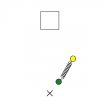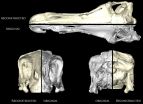New insight into the neuroscience of choking under pressure
Fear of loss, combined with positive or negative incentives, influences performance
2014-11-05
(Press-News.org) Everyone knows the scene: a basketball player at the free throw line, bouncing the ball as he concentrates on the basket. It's a tight game, and his team needs this point. He regularly makes baskets from much farther away while avoiding defenders, but now, when all is calm, he chokes and misses the basket, and his team loses. Recent research from The Johns Hopkins University suggests that in situations like this, performance depends on two factors: the framing of the incentive in terms of a loss or a gain, and a person's aversion to loss.
"We can measure someone's loss aversion and then frame the task in a way that might help them avoid choking under pressure," says Vikram Chib, Ph.D., assistant professor of biomedical engineering at the Johns Hopkins University School of Medicine.
The results of the study, published online in The Journal of Neuroscience on Nov. 5, are counterintuitive. Those with high loss aversion choked when told they stood to gain a lot, while those with low loss aversion choked under the pressure of large prospective losses. By monitoring the participants' brain activity as they were presented with incentives and then performed a skilled movement task, the researchers found that performance is influenced by a brain area called the ventral striatum.
Twenty-six participants, 20 to 30 years old, came in for testing on two consecutive days. On the first day, they learned a brief but challenging video game that required precise hand control. The difficulty of the game was then modified according to the ability of the player so that the task was equally difficult for each participant.
On the second day, the participants were given $100 in cash and then placed in an MRI machine to play the game. Before each round of the two-second game, they were told what the stakes were for that round — anything from losing $100 to gaining $100. At the end of 300 rounds, one round would randomly be chosen and used to calculate the participant's take-home amount, so it was in the participants' interest to do their best on each trial. Finally, in a separate test, each participant was asked whether or not they would take 140 specific coin toss gambles for varying amounts of money; for example, if the toss of a coin would determine your chance of winning $4 or losing $2, would you take the gamble? Each person's yes or no answers were used to calculate their loss aversion.
"We found that the way we framed an incentive — as a potential gain or loss — had a profound effect on participants' behavior as they performed the skilled task," says Chib. "But the effect was different for those with high versus low aversion to loss."
High loss aversion seemed to help players' performance when they were threatened with increasing losses; even with a potential $100 loss, participants in this category didn't choke. When compared to their performance on trials with no monetary value, those with high loss aversion who were offered gains of $25 to $75 also showed improved performance, but when offered a $100 award, they choked. Meanwhile, those with low loss aversion improved their performance with increasing prospective gains and with increasing prospective losses, only up to a point. They choked when threatened with a loss of $100.
To see what was going on in the brain through all of this, the researchers used MRI imaging of subjects as they played the game. They focused on the ventral striatum, a small area of the brain that processes reward but is also known to help control movement.
When an incentive was initially presented to participants, the activity of their ventral striatum increased with the magnitude of the stakes, whether framed as potential gains or losses. Differences emerged between the two categories of participants as they played the game. Those who were more loss averse had lower striatal activity and performed worse when playing for large potential gains; people who were less loss averse had less striatal activity and worse performance when they were trying to avoid large potential losses.
Chib believes that these results confirm that the ventral striatum is the interface between incentive-driven motivation and execution of physical performance, and he hopes these insights could help coaches and others to work with — or overcome — people's loss aversion in order to maximize their performance. More importantly than playing sports, the insights could help people taking important tests, pilots flying under dangerous conditions or surgeons performing difficult procedures.
INFORMATION:
Other authors of the report include Shinsuke Shimojo and John O'Doherty of the California Institute of Technology.
This work was supported by grants from the National Science Foundation (1062703), the Gordon and Betty Moore Foundation, the Japan Science and Technology Agency/Core Research for Evolutional Science and Technology, and the California Institute of Technology/Tamagawa Global Center of Excellence.
On the Web
View the article at The Journal of Neuroscience: http://dx.doi.org/10.1523/JNEUROSCI.1491-14.2014
Visit the Chib Lab's website: http://www.bme.jhu.edu/people/primary.php?id=1100
[Attachments] See images for this press release:

ELSE PRESS RELEASES FROM THIS DATE:
2014-11-04
For years, scientists have debated how best to assess brain levels of oxytocin, a hormone implicated in social behaviors. Now, researchers at the Stanford University School of Medicine have found the first direct evidence in children that blood oxytocin measurements are tightly linked to levels of oxytocin in cerebrospinal fluid, which bathes the brain.
Low oxytocin levels in blood and CSF are both correlated to high anxiety levels, the research also showed. The findings will be published online Nov. 4 in Molecular Psychiatry.
"So many psychiatric disorders involve ...
2014-11-04
Fossils are usually deformed or incompletely preserved when they are found, after sometimes millions of years of fossilization processes. Consequently, fossils have to be studied very carefully to avoid damage, and are sometimes they are difficult to access, as they might be located in remote museum collections. An international team of scientists, led by Dr. Stephan Lautenschlager from the University of Bristol now solved some of these problems by using modern computer technology, as described in a recent issue of the Journal of Vertebrate Paleontology.
The team consisting ...
2014-11-04
In a study that included nearly 38,000 patients, those diagnosed with nonobstructive coronary artery disease (CAD) had a significantly increased risk of heart attack or death one year after diagnosis, according to a study in the November 5 issue of JAMA.
Nonobstructive coronary artery disease (CAD) is atherosclerotic plaque that would not be expected to obstruct blood flow or result in anginal symptoms (such as chest pain). Although such lesions are relatively common, occurring in 10 percent to 25 percent of patients undergoing coronary angiography, their presence has ...
2014-11-04
Among patients with metastatic melanoma, treatment with a combination of the drugs sargramostim plus ipilimumab, compared with ipilimumab alone, resulted in longer overall survival and lower toxicity, but no difference in progression-free survival, according to a study in the November 5 issue of JAMA.
F. Stephen Hodi, M.D., of the Dana-Farber Cancer Institute, Boston, and colleagues conducted a phase 2 clinical trial in which 245 patients with unresectable (unable to be removed by surgery) stage Ill or IV melanoma were randomly assigned to receive ipilimumab (intravenously) ...
2014-11-04
Testing of study participants who wore head-mounted display systems (Google glasses) found that the glasses created a partial peripheral vision obstruction, according to a study in the November 5 issue of JAMA.
Interest in wearable head-mounted display systems for general consumers is increasing, with multiple models in production. However, their effect on vision is largely unknown. Peripheral visual field is a main component of vision and essential for daily activities such as driving, pedestrian safety, and sports. Conventional spectacle frames can reduce visual field, ...
2014-11-04
BOSTON – Patients with metastatic melanoma who were treated with ipilimumab, an immune checkpoint blocker, survived 50 percent longer – a median 17.5 months vs. 12.7 months – if they simultaneously received an immune stimulant, according to a study led by Dana-Farber Cancer Institute scientists.
Patients in the clinical trial who got the combined therapies also had fewer serious adverse side effects than those who received only ipilimumab, the researchers report in the Journal of the American Medical Association.
The group treated with both ipilimumab ...
2014-11-04
San Diego — A recently developed Adeno-Associated Virus (AAV)-based medication has the potential to offer substantial protective effects for patients attempting to cease methamphetamine use. This research is being presented at the 2014 American Association of Pharmaceutical Scientists (AAPS) Annual Meeting and Exposition, the world's largest pharmaceutical sciences meeting, in San Diego, Nov. 2-6.
Methamphetamine, commonly referred to as meth, is an addictive substance that can cause brain damage, organ failure, stroke, open sores, rotting teeth, mania, paranoia, ...
2014-11-04
San Diego — Scientists have developed a novel topical microbicide loaded with hyaluronic acid (HA) nanofibers that could potentially prevent transmission of the human immunodeficiency virus (HIV) through the vaginal mucosa. This research is being presented at the 2014 American Association of Pharmaceutical Scientists (AAPS) Annual Meeting and Exposition, the world's largest pharmaceutical sciences meeting, in San Diego, Nov. 2-6.
HIV is an infectious virus that attacks T lymphocytes, a type of white blood cell that prevents infections and disease. Over time, HIV ...
2014-11-04
PHILADELPHIA – An important addition to the "eat less, move more" strategy for weight loss lies in behavioral counseling to achieve these goals. But research on how primary care practitioners can best provide behavioral weight loss counseling to obese patients in their practices — as encouraged by the Centers for Medicare and Medicaid Services (CMS) — remains slim, according to a systematic review of this topic published today in JAMA. The study was led by researchers from the Perelman School of Medicine at the University of Pennsylvania.
"After an ...
2014-11-04
Washington D.C., November 4, 2014 – A Clinical Perspectives article published in the November 2014 issue of the Journal of the American Academy of Child and Adolescent Psychiatry proposes a tool to empower stakeholders, guide caregivers, and provide a rationale for advocates, when considering the systems of support offered to people with an autism spectrum disorder (ASD).
Organizations such as the American Academy of Child and Adolescent Psychiatry, the European Society for Child and Adolescent Psychiatry, the International Association for Child and Adolescent Psychiatry ...
LAST 30 PRESS RELEASES:
[Press-News.org] New insight into the neuroscience of choking under pressure
Fear of loss, combined with positive or negative incentives, influences performance


